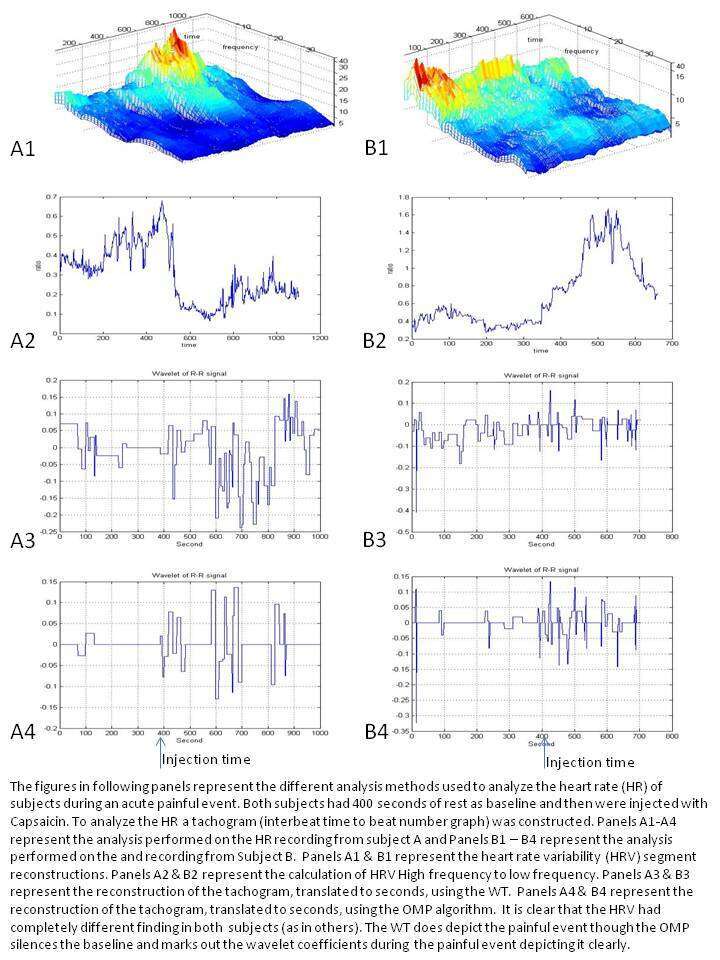
Heart Rhythm Analysis by Sparse Representation for Immediate Acute Stressful Event Detection
2Pediatric Cardiology, UCSD, CA
3Anesthesiology, UCSD, CA
4Department of Industrial Engineering and Management, Ben Gurion University
5Department of Industrial Engineering and Management, Stanford University, CA
6Center of Excellence for Stress and Mental Health, Veterans Affairs, CA
7Anesthesiology, Sheba Medical Center, CA
8The department of Electrical engineering, The Technion, Israel Institute of Technology, Haifa
Background: Heart rhythm analysis using sparse representation proved useful in detecting painful events. Our aim was to assess the heart rate in young healthy adult males who undergo a painful capsaicin injection for immediate detection of a stressful event, using the Fourier transform (FT), the Wavelet transform (WT) and the Orthogonal Matching Pursuit algorithm (OMP) with an over complete Fourier / Wavelet dictionary.
Methods: 16 volunteers participated in a study conducted in the pain clinic at a single center. All subjects were injected with intramuscular capsaicin while being monitored, pain was rated using the Visual Analogue Score.
Results: Data from 15 subjects were analyzed. Compared to baseline, The WT analysis showed a significant coefficients density increase during the initial 60 seconds of pain incline period (p<0.01) and at the 5 minute period (p<0.01). The OMP analysis showed a significant wavelet coefficients density increase during the initial 60 seconds (p<0.001) and at 5 minutes (p<0.001), both with suggestive higher amplitudes. Comparison of both methods showed that during baseline there was a significant reduction of wavelet coefficient density using the OMP algorithm (p<0.01), and a mean log amplitudes difference increase, correlating with the cold pressor test findings. Spectral analysis using the Fourier transform showed significant variations between the different subjects with various different patterns during pain.
Discussion: Heart rhythm analysis using novel methodologies proved feasible for immediate acute stressful event detection. Further computation and future studies are needed to assess real time detection in different clinical settings.
Powered by Eventact EMS